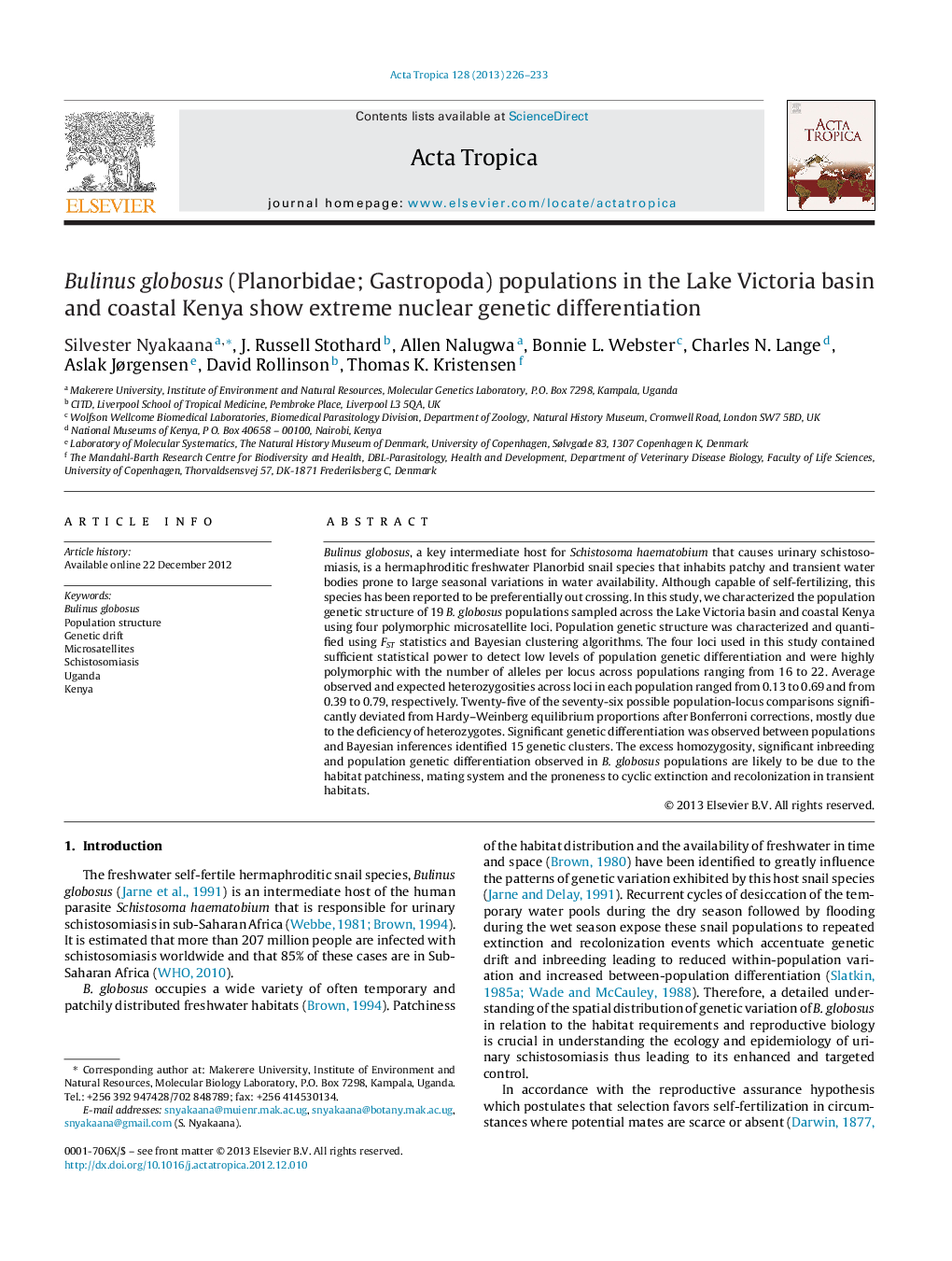| کد مقاله | کد نشریه | سال انتشار | مقاله انگلیسی | نسخه تمام متن |
|---|---|---|---|---|
| 3393867 | 1221409 | 2013 | 8 صفحه PDF | دانلود رایگان |

▶ Bulinus globosus populations in this study are more variable than in previous studies. ▶ Heterozygote deficiency was observed in most populations of B. globosus. ▶ Inter-population genetic differentiation is observed at all hierarchical levels. ▶ Bayesian cluster analysis identified 15 distinct genetic clusters in the total sample of B. globosus from Kenya and Uganda. ▶ Population genetic structure in B. globosus is likely to be due to habitat conditions and mating system.
Bulinus globosus, a key intermediate host for Schistosoma haematobium that causes urinary schistosomiasis, is a hermaphroditic freshwater Planorbid snail species that inhabits patchy and transient water bodies prone to large seasonal variations in water availability. Although capable of self-fertilizing, this species has been reported to be preferentially out crossing. In this study, we characterized the population genetic structure of 19 B. globosus populations sampled across the Lake Victoria basin and coastal Kenya using four polymorphic microsatellite loci. Population genetic structure was characterized and quantified using FST statistics and Bayesian clustering algorithms. The four loci used in this study contained sufficient statistical power to detect low levels of population genetic differentiation and were highly polymorphic with the number of alleles per locus across populations ranging from 16 to 22. Average observed and expected heterozygosities across loci in each population ranged from 0.13 to 0.69 and from 0.39 to 0.79, respectively. Twenty-five of the seventy-six possible population-locus comparisons significantly deviated from Hardy–Weinberg equilibrium proportions after Bonferroni corrections, mostly due to the deficiency of heterozygotes. Significant genetic differentiation was observed between populations and Bayesian inferences identified 15 genetic clusters. The excess homozygosity, significant inbreeding and population genetic differentiation observed in B. globosus populations are likely to be due to the habitat patchiness, mating system and the proneness to cyclic extinction and recolonization in transient habitats.
Nineteen populations of Bulinus globosus from Uganda and Kenya show significant genetic differentiation and inbreeding and the total sample is partitioned into 15 genetic clusters.Figure optionsDownload as PowerPoint slide
Journal: Acta Tropica - Volume 128, Issue 2, November 2013, Pages 226–233